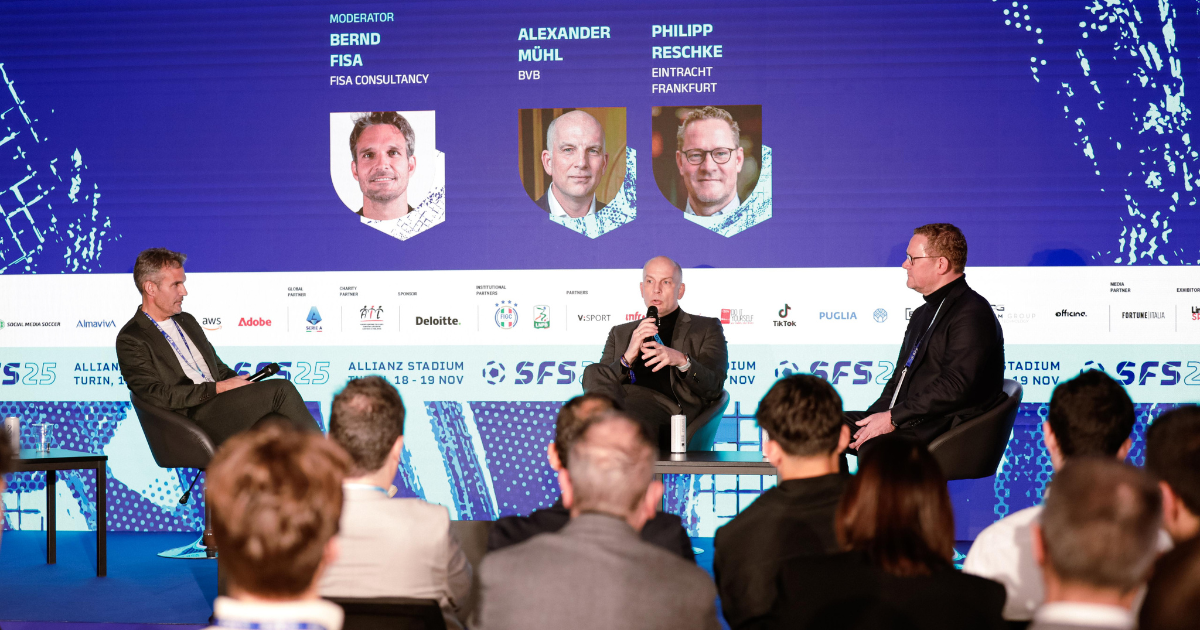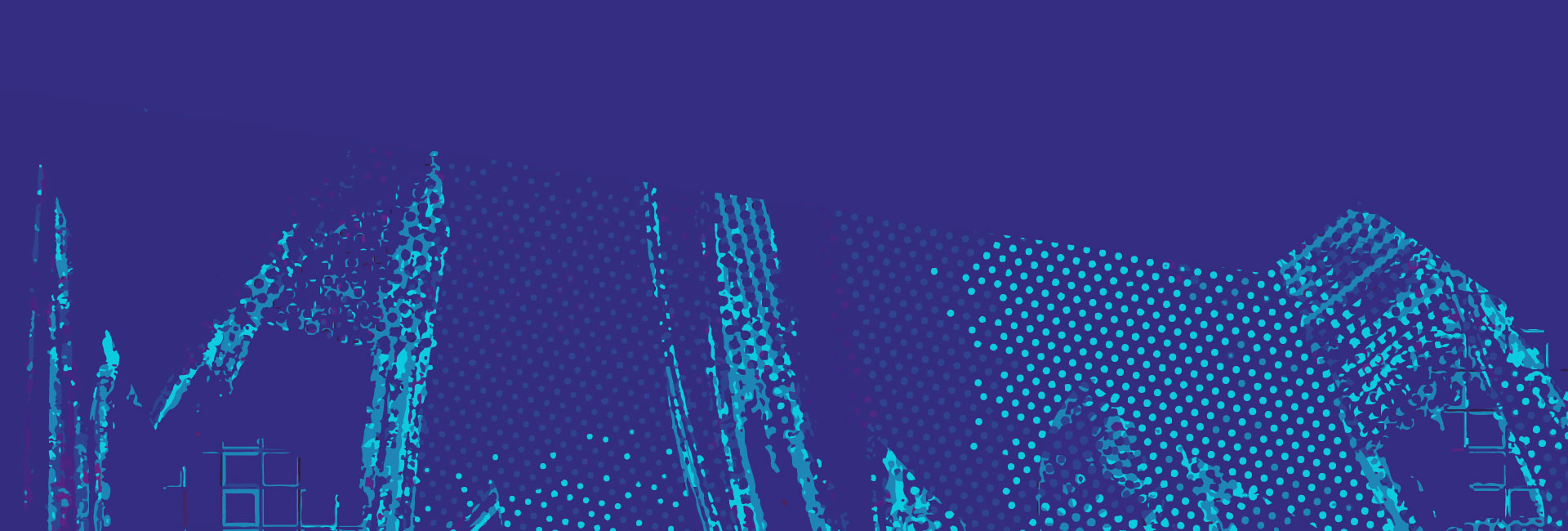
The Bundesliga Model Fills Stadiums and Fan Stories
The second panel of Day 2 Football Stage focused on the German identity, centered around the 50+1 rule, and featured Alexander Mühle, Director Marketing & Digitalisation at Borussia Dortmund, Bernd Fisa, Founder of Fisa Consultancy, and Philipp Reschke, Board Member of Eintracht Frankfurt Football AG.
To understand the scale of the Bundesliga phenomenon, one only needs to look at the data: clubs like Bayern Munich surpass 300,000 registered members. Not only the German ‘Panzer’ (tank) boasts staggering numbers, but also Borussia Dortmund (230,000) and Eintracht Frankfurt (155,000)—figures that testify to an enormous sense of belonging, difficult to replicate in other countries. The public doesn’t fill the stadiums by chance: they do it because football is experienced as an experience. It’s not just entertainment, but identity, everyday life.
On one side, there is spectacle-football, built on event-matches, lights, shows, and TV production. On the other, the German model: matches that are not just content, but the expression of a territory and a national culture. Borussia Dortmund is the perfect example: the goal is not merely to entertain, but to strengthen a regional identity, fueling the fans’ desire to be present and participatory.
As highlighted by Reschke, the atmosphere is not an accessory, it is “an extra part,” the element that makes the Bundesliga globally unique. German stadiums guarantee three structural advantages: affordable prices, modern and often renovated facilities, and organized popular participation, resulting in full stadiums, contagious energy, and an international perception of an authentic, passionate, and engaging league.
Yet, it hasn’t always been this way: about thirty years ago, Eintracht itself was fighting for the Meisterschale (German Championship shield), but the stadium was often half-empty. The turning point occurred post-2006, after the German World Cup: stadium renovations, new cultural enthusiasm, and growth of the Bundesliga product. Since then, public attendance has become a constant.
In the 70s and 80s, Eintracht Frankfurt experienced a period as a top-tier club, while in the 90s and 2000s, it slid towards the mid-table. In 2018, they won the DFB-Pokal (German Cup), and in 2022, they won the UEFA Europa League.
The path to digitalization was not simple; when Eintracht introduced digital ticketing and new apps, fans were not enthusiastic—quite the opposite. Today, however, managing flows, access, and data is much easier, enhancing the fan experience, and communicating with transparency (“why are we collecting this data?”).
Borussia’s response is clear: the Signal Iduna Park, home to the mammoth Yellow Wall, has become a symbol. Fair prices: season tickets at €250. The atmosphere is not built by marketing but by the supporters themselves, while commercial initiatives remain minimal. More than a product, Borussia is an ecosystem.
The 50+1 rule is a fundamental principle of German football that determines who controls a club. 50% of the shares + at least 1 share must be held by the club members (i.e., the fans or the original “sports association”). This way, the fans always maintain a majority of the decision-making power.
The central point is this: investors can put in money, but they cannot have total control. The rule limits large capital and enforces a strong connection with the fans. It is not an obstacle, but a narrative element.
This is where Borussia created a powerful commercial aimed at the American market: the competition is therefore international; they compete against Real, Barcelona, PSG. European victories are difficult to achieve, which is why the narratives export values like the acceptance of defeat, unity, and bonds.
In Germany, football is not a product to be sold: it is a life experience. It is recognition, community, energy, roots; it is tradition walking hand-in-hand with innovation. This fragile yet powerful balance is the key to the Bundesliga model. A model that aims not just to fill stadiums, but to fill stories.



